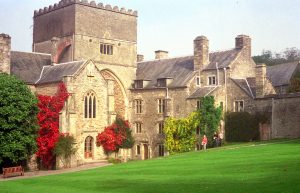 The Prologue of Plague of a Green Man, the second book in my Lady Apollonia West Country Mystery series, opens in a blinding fog on Dartmoor not far from the city of Exeter in Devon in the year 1380. Dartmoor is southwest of Exeter where I lived with my husband four different years in the late 1980’s and 90’s. In 1951 Dartmoor became the first English national park covering an area of 368 square miles. Lou and I enjoyed every opportunity we could find to hike and explore Dartmoor National Park
The Prologue of Plague of a Green Man, the second book in my Lady Apollonia West Country Mystery series, opens in a blinding fog on Dartmoor not far from the city of Exeter in Devon in the year 1380. Dartmoor is southwest of Exeter where I lived with my husband four different years in the late 1980’s and 90’s. In 1951 Dartmoor became the first English national park covering an area of 368 square miles. Lou and I enjoyed every opportunity we could find to hike and explore Dartmoor National Park
Six major rivers flow in various directions towards the sea from their sources in the peat deposits of Dartmoor but all the moor takes its name from one, the River Dart. I use the eastern part of Dartmoor as my setting in the Prologue of Plague of a Green Man. Brandon Landow, the disreputable pardoner in my stories, seeks to meet someone in Grimspound but gets lost in a dense fog so common on Dartmoor. He eventually finds a flowing stream and follows its path downstream along the Wray Brook until he reaches habitation and a church in the village of Lustleigh. Unbeknownst to him, Grimspound was a Bronze Age settlement having been abandoned for millenia.
There are many churches on Dartmoor that go back to the medieval period, including the Church of Saint John in Lustleigh which plays a role my story. Only the north aisle has been added since the time of my story. We found the parish church in Bovey Tracey to be particularly interesting because it is said to have been founded in 1170 by William de Tracey as penance for his being one of the four knights who murdered Thomas Becket.
The medieval church in Brentor, on the western side of Dartmoor, is the highest church in Britain as well as the fourth smallest. The church of Buckland in the Moor is constructed from local granite and though much of its present building is 15th century, it has a, 11th century Norman font and a beautifully preserved 14th century wood screen. Widecombe in the Moor has a church tower which provides commanding views over the village and surrounding moorland. Finally, there were monastic churches on Dartmoor such as Tavistock Abbey which is left in ruins after the Dissolution of the Monasteries by King Henry VIII. Buckland Abbey near Yelverton survived the Dissolution because the new owner built a fine residence for himself right over the church as you can see in the picture above. The house is now open to visitors through the National Trust.
For more information on Dartmoor, click on
https://en.wikipedia.org/wiki/Dartmoor .
Tags: Chaucer's England, historical fiction, medieval mysteries